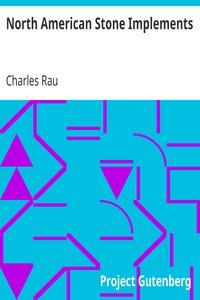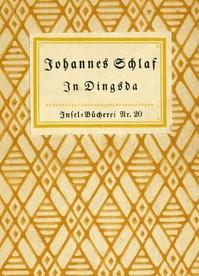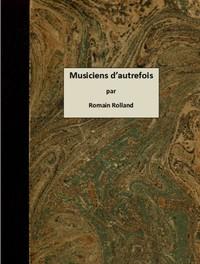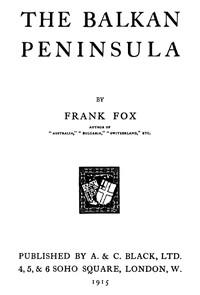|
|
Read this ebook for free! No credit card needed, absolutely nothing to pay.Words: 9303 in 3 pages
This is an ebook sharing website. You can read the uploaded ebooks for free here. No credit cards needed, nothing to pay. If you want to own a digital copy of the ebook, or want to read offline with your favorite ebook-reader, then you can choose to buy and download the ebook.

: North American Stone Implements by Rau Charles - United States Antiquities; Indians of North America Implements; Stone implements United States@FreeBooksWed 07 Jun, 2023 NORTH AMERICAN STONE IMPLEMENTS. CHARLES RAU. REPRINTED FROM THE REPORT OF THE SMITHSONIAN INSTITUTION FOR 1872. WASHINGTON: GOVERNMENT PRINTING OFFICE. 1873. NORTH AMERICAN STONE IMPLEMENTS. BY CHARLES RAU. The division of the European stone age into a period of chipped stone, and a succeeding one of ground or polished stone, or, into the palaeolithic and neolithic periods, seems to be fully borne out by facts, and is likely to remain an uncontroverted basis for future investigation in Europe. In North America chipped as well as ground implements are abundant; yet they occur promiscuously, and thus far cannot be referred respectively to certain epochs in the development of the aborigines of the country. Archaeological investigation in North America, however, is but of recent date, and a careful examination of our caves and drift-beds possibly may lead to results similar to those obtained in Europe. When in the latter part of the world man lived contemporaneously with the now extinct large pachydermatous and carnivorous animals, he used unground flint tools of rude workmanship, which were superseded in the later stages of the European stone age, comprising the neolithic period, by more finished articles of flint and other stone, many of which were brought into final shape by the processes of grinding and polishing. In North America stone implements likewise have been found associated with the osseous remains of extinct animals; yet these implements, it appears, differed in no wise from those in use among the aborigines at the period of their first intercourse with the whites. It affords me particular satisfaction to present in Fig. 1 a full-size drawing of the last-named arrow-head, which is still in the possession of Mrs. Elizabeth Koch, of Saint Louis, the widow of the discoverer. The drawing was made after a photograph, for which I am indebted to Mrs. Koch. It will be noticed that the point, one of the barbs, and a corner of the stem of this arrow-head--if it really was an arrow-head, and not the armature of a javelin or spear--are broken off; but there remains enough of it to make out its original shape, which is exactly that of similar weapons used by the aborigines in historical times. The specimen in question, which, as I presume, was found by Dr. Koch in its present mutilated shape, consists of a light-brown, somewhat mottled flint. Flint implements of the European "drift type," however, are by no means scarce in North America, although they cannot be referred to any particular period, but must be classed with the other chipped and ground implements in use among the North American aborigines during historical times. In the first place I will mention certain leaf-shaped flint implements which have been found in mounds and on the surface, as well as in deposits below it. They are comparatively thin, of regular outline, and exhibit well-chipped edges all around the circumferences. On the whole, they are among the best North American flint articles which have fallen under my notice. The specimens found by Messrs. Squier and Davis in a mound of the inclosure called Mound City, on the Scioto River, some miles north of Chillicothe, Ohio, belong to this class. Most of them were broken, but a few were found entire, one of which is represented in half-size by Fig. 100 on page 211 of the "Ancient Monuments of the Mississippi Valley." This specimen measures four inches in length and about three inches across the broad rounded end. I have a still larger one, consisting of a reddish mottled flint, which was found on the surface in Jefferson County, Missouri. The annexed full-size drawing, Fig. 2, shows its outline. The edge on the right side is a little damaged by subsequent fractures, but for the sake of greater distinctness I have represented it as perfect. The finest leaf-shaped implements which I have had occasion to examine, are in the possession of Mr. M. Cowing, of Seneca Falls, New York. The owner told me he had more than a hundred of them, which were all derived from a locality in the State of New York, where they were accidentally discovered, forming a deposit under the surface. Mr. Cowing, who is constantly engaged in collecting and buying up Indian relics, refused to give me any information concerning the place and precise character of the deposit, basing his refusal on the ground that a few of these implements were still in the hands of individuals in the neighborhood, and that he would reveal nothing in relation to the deposit until he had obtained every specimen originally belonging to it. I am, therefore, unable to give any particulars, and must confine myself to the statement that the specimens shown to me present in general the outline of the original of Fig. 2, though they are a little smaller; and that they are thin, sharp-edged, and exquisitely wrought, and consist of a beautiful, variously-colored flint, which bears some resemblance to chalcedony. Concerning the use or uses of North American leaf-shaped articles, I am hardly prepared to give a definite opinion, though I think it probable that they served for purposes of cutting. They were certainly not intended for spear-heads, their shape being ill-adapted for that end; nor do I think that they were used as scrapers, as other more massive implements of a kindred character probably were, of which I shall speak hereafter. The aborigines were in the habit of burying articles of flint in the ground, and such deposits, sometimes quite large, have been discovered in various parts of the United States. These deposits consist of articles representing various types, among which I will mention the leaf-shaped implements in the possession of Mr. Cowing; the agricultural tools found at East Saint Louis, Illinois, of which I have given an account in the Smithsonian report for 1868; and the rude flint articles of an elongated oval shape, which were found about 1860 on the bank of the Mississippi, between Carondelet and Saint Louis, Missouri, and doubtless belonged to a deposit. I have described them in the above-named Smithsonian report, and have also given there a drawing of one of the specimens in my possession. This drawing has been reproduced by Mr. E. T. Stevens, on page 441 of his valuable work entitled "Flint Chips," with remarks tending to show that the specimen does not represent an unfinished implement, as I am inclined to believe, but a complete one. I must admit that my drawing is not a very good one. It gives the object a more definite character than it really possesses, the chipping appearing in the representation far less superficial than it is in the original, which, indeed, has such a shape that it could easily be reduced to a smaller size by blows aimed at its circumference. I have myself scaled off large flat flakes from similarly-shaped pieces of flint, using a small iron hammer and directing my blows against the edge, and have thus become convinced that the further working of objects like that in question could offer no serious difficulties to a practised flint-chipper. My collection, moreover, contains several smaller flint objects of similar shape, which are undoubtedly the rudiments of arrow and spear-heads, and I may add that I obtained a few from places where the manufacture of such weapons was carried on. Free books android app tbrJar TBR JAR Read Free books online gutenberg More posts by @FreeBooks

: A Classified Catalogue of Works in General Literature Published by Longmans Green & Co. by Longmans Green And Co - Publishers' catalogs England London; Longmans Green and Co. Catalogs@FreeBooksWed 07 Jun, 2023
|
Terms of Use Stock Market News! © gutenberg.org.in2025 All Rights reserved.






